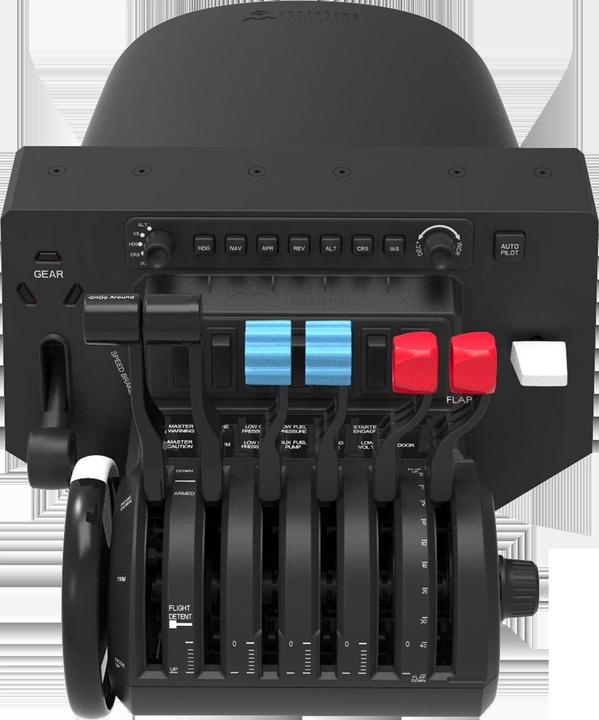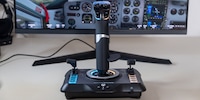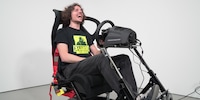

Honeycomb land for hobby pilots: Alpha and Bravo from Honeycomb
A start-up from California has shaken up the market with high-quality control units for flight simulators. Honeycomb Alpha and Bravo were sold out for a long time in the summer. Is the hype justified?
Approach to Samedan, slightly too low. A little more thrust for lift, although now the groundspeed of 90 knots is again much too high. Shit. Do I have the flaps out? "LANDING GEAR! LANDING GEAR! LANDING GEAR!" announces the robot voice in the cockpit. Too late, too late. Crash on Runway 21. I didn't activate the switch for the landing gear. My hour-long flight from Zurich to the Engadine ends in disaster. The "Alpha" control horn and the "Bravo" thrust controller of Honeycomb don't take the flying away from you. This is still the highest stress. But thanks to authentic control in the best possible way.
The two controllers complement each other (almost) perfectly. "Alpha" controls the aircraft and electronics and lets me look around the cockpit. "Bravo" takes care of thrust, the autopilot and the landing gear and has seven toggle switches that I can freely assign. My only problem is that I don't have rudder pedals. Honeycomb completes the ABC with the "Charlie" rudder pedals in the spring of 2022. For my use, I put the rudder on one of the two horizontal switches on the right side of the control horn. Not really practical, but it will do for ground navigation.
The Hardware
What Honeycomb delivers here is top quality. The cases are plastic, but seem more solid than anything I've had the pleasure of testing in game controllers. Not least because the plate and clamps for mounting on the table are made of metal. Here nothing slips and nothing breaks off. Alternatively, the controllers can also be attached to the table with a gigantic suction cup. Thoughtful design also runs through the devices, which are very solidly built and can be controlled as smooth as butter.
The resistance of the thrust controllers can be set by a wheel on the right side. This elegantly solves the problem of knobs that are too loose or too tight. The toggle switches for the two units toggle with a satisfying "clack", as does the switch for the landing gear. The buttons for the autopilot are also very satisfying to press. Less great to me are the rotary controls for the autopilot, which are plastic, the "ignition key" and the control for the flaps. Completely unsuccessful is the trim wheel, which is far too easy to turn and is also unusable on the software side, but more on that later.
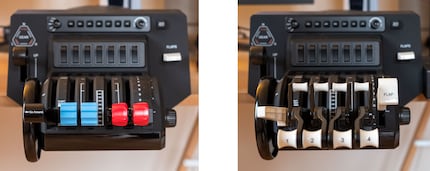
The configurations
The "Alpha Flight Yoke" is strongly oriented towards a Cessna 172 and does little wrong with it. Permanently marked buttons for battery, alternator, avionics and the various lights and a rotary control as an "ignition key" are useful, even if you never operate most of them after takeoff. "Immersion" is the English magic word, which has been appropriately translated into German as "Eintauchen". Four buttons and a small joystick are available, plus two horizontal and two vertical buttons, which are suitable for trimming, for example.
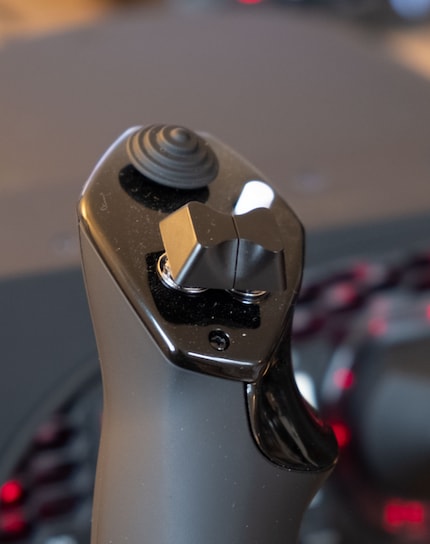
Of course, all switches and buttons are freely assignable. The "Bravo Throttel Quadrant" can be configured really individually. Thanks to various attachments, everything a virtual pilot's heart desires is possible, from a single-engine propeller plane to a four-engine airliner with air brakes and reverse thrust.
The operation
Yoke and thrust controls work in a basic configuration after installing the drivers, and the toggle switches on the thrust control are redundant with the toggle switches for the various lights on the aircraft. So those are the first ones you should reprogram. In my case, I assigned the parking brake, flashlight, and yaw damper to them, among others. After that you have to save a separate setup for each type of aircraft, for example for single propeller, twin propeller, twin thruster and quad thruster. Here I noticed that the trim wheel is configured very oddly, as a button rather than an axis. This makes one of the most important tools in the virtual aircraft unusable.
I turn the (trim) wheel
A short digression about the function of the trim wheel: The trim wheel is used to keep the plane stable in the air, so that it doesn't climb or sink without my intervention. Normally you don't control climb and sink with the yoke (i.e. the "steering wheel"), but with the power of the engine. With more thrust the plane climbs, with less thrust it sinks. The point at which the aircraft neither rises nor sinks, but simply flies straight ahead, is usually controlled in a real aircraft by the trim wheel - a continuously variable wheel which corrects the nose down or up. Now, on the "Bravo Throttle Quadrant", the trim wheel is configured as a knob, not a joystick axis. This leads to the fact that with each turn a button signal is sent several times, which the flight simulator does not understand correctly. In concrete terms this means: when trimming, nothing happens at first. If I turn harder, the plane trims too much.
I have tried various internet hacks, all of which were unsuccessful. I gave up and finally assigned the trim to the buttons on the yoke. For single propeller and twin propeller aircraft I have also misused one of the unused thrust controls and now trim like this. Not quite realistic, but it works. Whether Honeycomb or Microsoft will find a software solution to the problem is doubtful. Even if there was a solution, I still wouldn't use the wheel. The wheel has too much play and spins too loosely. As a result, it stands in stark contrast to the otherwise rock-solid build quality of the rest of the components.
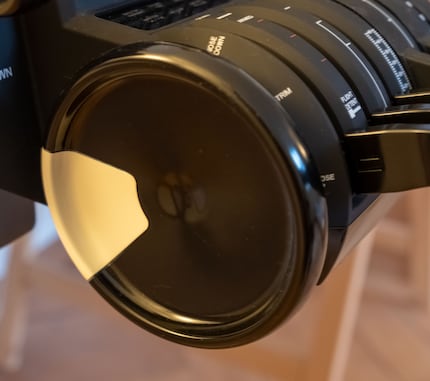
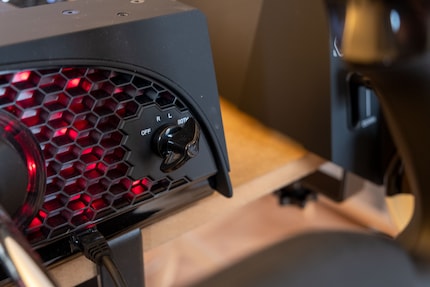
Conclusion
The hype is justified: Honeycomb has delivered with the "Alpha Yoke" and the "Beta Throttle Quadrant." No matter if Cessna, Learjet or A320, almost every type of aircraft can be controlled smoothly. This has its price. Whoever buys both devices has to fork out half a grand. This puts the Honeycomb devices in the upper segment, but out of competition in terms of variety. The only criticism is the trim wheel, which is useless and the ignition key, which seems rickety. So far I have flown with a joystick with thrust control, which has its appeal especially for military aircraft. For civilian aviation, Honeycomb is the more attractive solution thanks to the many authentic buttons and different configurations. The virtual aircraft can be controlled much more precisely, and take-offs and landings are child's play, as long as you don't screw up everything from start to finish. Runway 21 in Samedan sends its regards. If you invest in high-quality rudder pedals, you'll be ready for any situation.
When I flew the family nest over 15 years ago, I suddenly had to cook for myself. But it wasn’t long until this necessity became a virtue. Today, rattling those pots and pans is a fundamental part of my life. I’m a true foodie and devour everything from junk food to star-awarded cuisine. Literally. I eat way too fast.
